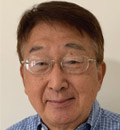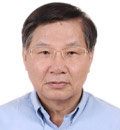An advanced extractive distillation process for aromatics recovery
This article focuses on a novel extractive distillation (ED) process for recovering benzene, toluene and xylene (BTX) aromatics from a full-boiling-range pyrolysis gasoline or reformate feedstock—a process that has been commercially demonstrated and is ready for licensing or a JV.
IP: 18.119.159.150
The Authors
Lee, F. M. - Shin-Chuang Technology Co. Ltd., Taiwan, Republic of China
Fu-Ming Lee is the Senior Consultant at Shin Chuang Technology, pioneering in developing ED technology developments. He has more than 40 yr of experience in the refining and petrochemicals industries. Dr. Lee holds 68 U.S. patents (39 in ED) and has written 43 articles in technical publications (26 in ED). He earned BS and MS degrees, as well as a PhD, in chemical engineering (fmlee1227@gmail.com).
Shen, M. Z. Y. - Shin-Chuang Technology Co. Ltd., Taiwan, Republic of China
Mark Zih-Yao Shen is a Senior Research Scientist at Shin Chuang Technology. His experience includes the desulfurization of diesel. Dr. Shin earned BS and MS degrees, as well as a PhD, in chemistry from National Chiayi University, Taiwan.
Chen, C. Y. - Shin-Chuang Technology Co. Ltd., Taiwan, Republic of China
Chi Yao-Chen is a Senior Research Scientist at Shin Chuang Technology, where he has experience in developing advanced building and construction materials, along with waterproof cement additives for concrete, using waste rubber tires and asphaltenes. Dr. Chin earned BS and MS degrees, as well as a PhD, in applied chemistry from National Chiayi University, Taiwan.
Chen, Y. H. - Cartell Chemical, London, England
Yin-Hsien Chen is the Director of the Crackless Monomer Company and Cartell Chemical. He is experienced in cyanoacrylate adhesive manufacturing, achieving a JV between French Arkema group and Cartell Chemical Taiwan. He earned a BS degree in chemical and material engineering from the University of Auckland, along with an MS degree in management from Imperial College London.
Hsu, K. C. R. - International Innotech Inc., Katy, Texas
Kao-Chih "Ricky" Hsu is the Founder and President of International Innotech Inc., based in Houston, Texas. Previously, he worked for ExxonMobil for 18 yr. Hsu brings technologies and software from North America and Europe to Japan, Korea, China, Taiwan and ASEAN countries. He earned an MS degree in chemical engineering and an MS degree in computer sciences from the University of Missouri at Rolla. (E-mail: ricky_hsu@msn.com)
Related Articles
From the Archive











Comments